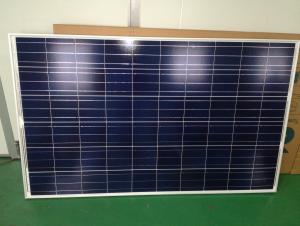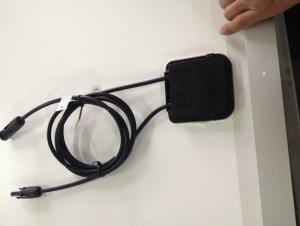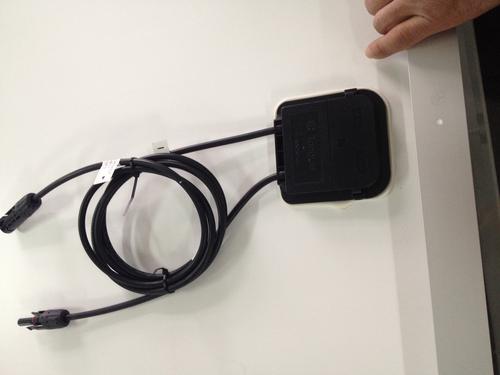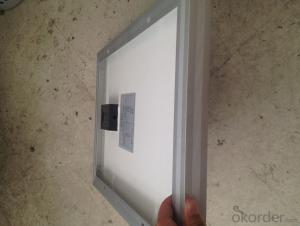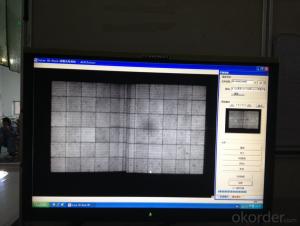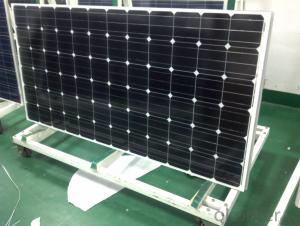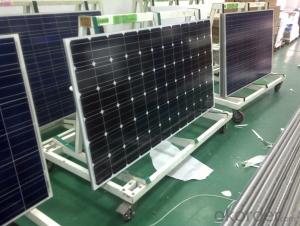1000W Polycrystalline Solar Panels-120W-Apply to Small Solar System
- Loading Port:
- Shanghai
- Payment Terms:
- TT OR LC
- Min Order Qty:
- 10000 watt
- Supply Capability:
- 50000000 watt/month
OKorder Service Pledge
OKorder Financial Service
You Might Also Like
Product Description
Solar Polycrystalline Series Panels
Introduction of Polycrystalline Solar Panels
With more than 10 gigawatts installed worldwide, we believe that affordable solar electricity is a essential part of worldwide energy mix. Our proven energy solutions have diversified the energy portfolio and reduce the fuel-energy price volatility, while delivering an LCOE that is cost competitive with fossil fuels.
We have developed, financed, engineered, constructed and operates many world largest grid connected PV power plants in existence. By integrating technologies, services and expertise across the entire solar value chain, we delivers bankable PV energy solutions that enable a world powered by reliable and affordable solar electricity.
With more than 10 gigawatts installed worldwide, First Solar is the leading global provider of PV energy solutions. We have developed, financed, engineered, constructed and currently operate the largest grid-connected PV power plants in existence. Below are a few examples of our groundbreaking projects from around the world.
Characteristics of Polycrystalline Solar Panels
I Solar Cell : High efficiency crystalline solar cell. Even if under the weak light, the solar module can produce maximum power output.
II Tempered glass (toughened glass): Anti-reflecting coating and high transmission rate glass increase the power output and mechanical strength of solar module.
III EVA and TPT: Using high quality EVA and TPT to prevent destroying and water.
IV AI frame: Without screw, corner connection. 6 holes on the frame can be installed easily.
V Junction box: Multi function junction box with water proof.
VI Long lifetime: ≥25 years; Less power decrease
VII Good performance of preventing from atrocious weather such as wind and hails.
VIII Resisting moisture and etching effectively, not effected by geology.
Standard Test Conditions of Polycrystalline Solar Panels
The opto-electrical specifications shown below are stabilized values being measured at Standard Test Conditions, Irradiance: 1000W/m2, Spectrum: AM1.5 at 25°C, The info below is subject to manufacturing tolerances. Where appropriate minutes of measurement are available and are used for the dimensioning of the installation.
Advantages of Polycrystalline Solar Panels
1.High reliability with guaranteed -3% to +5% power output tolerance, ensuring return on investment
2. High conversion efficiency based on leading innovative photovoltaic technologies
3. Withstands high wind-pressure and snow load, and extreme temperature variations
4. Attractive appearance Unique frame design, high mechanical strength, and easy Installation
Characteristics of Polycrystalline Solar Panels
Max Power Voltage Vmp (V) | 17.6V | 17.4 V |
Max Power Current Imp (A) | 6.82A | 6.33A |
Open Circuit Voltage Voc (V) | 22.6V | 22.4V |
Short Circuit Current Isc (A) | 7.26A | 6.87A |
Max Power Pm (W) | 120W | 120W |
Temperature Coefficient of Cells
NOCT | 47℃±2℃ |
Temperature Coefficients of Isc (%/℃) | 0.06 |
Temperature Coefficients of Voc (%/℃) | -0.33 |
Temperature Coefficients of Pmp (%/℃) | -0.45 |
Mechanical Data Solar Polycrystalline Series
Power | 120W/120W |
Dimension | 1219×670×30mm/1120×670×30mm |
Weight | 7.7 kg/8.4kg |
Tolerance | ±3% |
The dimension of the modules can be changed according to the demand of clients Limits.
Operating Temperature | –45 °C to +80°C |
Storage Temperature | –45 °C to +80°C |
Max System Voltage | 700V |
Guarantee Solar Polycrystalline Series Panels
Products Guarantee | 2 years free from defects in materials and workmanship |
Performance Guarantee | No less than 90% within 10yrs and no less than 80% within 25yrs |
Certificates | IEC, ISO, TUV, CE |
Dimension of Solar Polycrystalline Series Panels
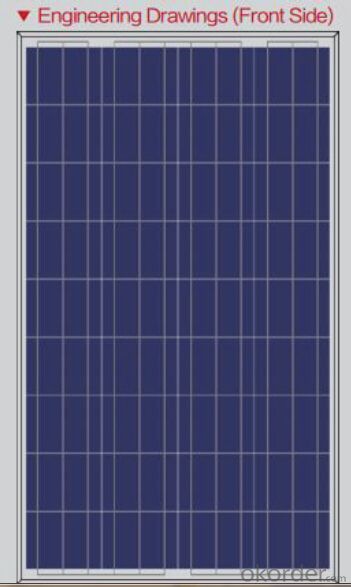
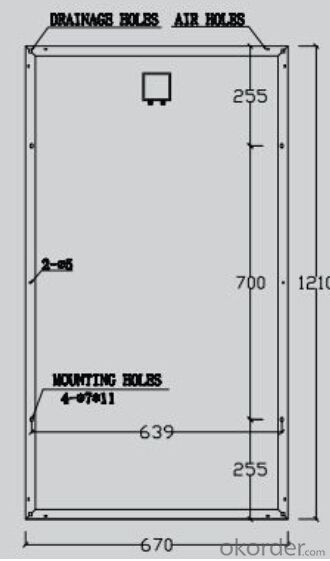
FAQ
We have organized several common questions for our clients,may help you sincerely:
1. What’s price per watt?
A: It’s depends on the quantity, delivery date and payment terms of the order. We can talk further about the detail price issue. Our products is high quality with lower price level.
2. Can you tell me the parameter of your solar panels?
We have different series of cells with different power output, both from c-si to a-si. Please take our specification sheet for your reference.
3. How do you pack your products?
We have rich experience on how to pack the panels to make sure the safety on shipment when it arrives at the destination.
4. What is your warranty system?
Our product performance guarantees for 25 years
• 12 years guarantee for workmanship
• Timeliness of delivery
• Quality Products certified (TÜV, UL, CE, ISO)
5. How do you pack your products?
We have rich experience on how to pack the panels to make sure the safety on shipment when it arrives at the destination.
- Q: I am searching for producers or distributors of solar panels. Thanks!
- Grimcho..I'm going to give you a secret that no-one I know of has ever spoken of..Call Your local railroad maintenance yard and/or your local oil production company..I know your probably in another part of the world where this will not apply but here its like this.. BNSF changes out every 2-5 years their 00w 24v panels...they still have a good 5years of lifetime..Oil companies change them out on their well sites every 2 years 2x 60w 24v (actually they are 2 +2vdc grids series) now if your in Italy sorry this didn't work but if your in New Mexico ..they are in Santa FE...also they have way good batteries that are wet cell and run about 600$ each that they just dump many times on the guy for asking..try it....From the E....
- Q: How do solar panels withstand hail or other weather conditions?
- Solar panels are designed to withstand various weather conditions, including hail. They are made with durable materials such as tempered glass and have a protective layer to prevent damage from hailstones. Additionally, they undergo rigorous testing to ensure they can withstand harsh weather, including hailstorms.
- Q: Can solar panels be used in areas with high levels of snowfall?
- Yes, solar panels can be used in areas with high levels of snowfall. However, the efficiency and performance of solar panels may be reduced during snowy conditions due to reduced sunlight exposure. Regular snow removal and tilt mounting options can help mitigate the impact of snow accumulation and ensure optimal energy production.
- Q: Can solar panels be installed on a streetlight?
- Yes, solar panels can be installed on a streetlight. This allows the streetlight to be powered by solar energy, reducing the reliance on traditional electricity sources and making it more sustainable.
- Q: I want to know that, is there any thing likehow much charge we can get per square feet. in a solar panel.let me know.also, I will appreciate if reference are given.
- Solar okorder
- Q: I have some property off the grid and am looking to add solar power
- Most Solar Panels are roughtly 6% efficient. Since the sun gives out about 366 watts per square meter, a good panel would be 200+ W/square meter. If you want to save a bunch of money, I suggest you have a look at this tutorial I'm linking. The guy explains how you can assemble your panel yourself. It's far easier than I first thought !
- Q: how does solar panels work?
- Solar panels collect solar radiation from the sun and actively convert that energy to electricity. Solar panels are comprised of several individual solar cells. These solar cells function similarly to large semiconductors and utilize a large-area p-n junction diode. When the solar cells are exposed to sunlight, the p-n junction diodes convert the energy from sunlight into usable electrical energy. The energy generated from photons striking the surface of the solar panel allows electrons to be knocked out of their orbits and released, and electric fields in the solar cells pull these free electrons in a directional current, from which metal contacts in the solar cell can generate electricity. The more solar cells in a solar panel and the higher the quality of the solar cells, the more total electrical output the solar panel can produce. The conversion of sunlight to usable electrical energy has been dubbed the Photovoltaic Effect. The photovoltaic effect arises from the properties of the p-n junction diode, as such there are no moving parts in a solar panel.
- Q: Can solar panels be used to power swimming pools?
- Yes, solar panels can indeed be used to power swimming pools. Solar panels can generate electricity from sunlight, which can be used to operate pool pumps, heaters, and other equipment, reducing the reliance on traditional electricity sources and saving on energy costs.
- Q: Basically I need a custom solar panel created. I won't go into detail but the dimensions need to be around 4''x2.5'' and be as thin as possible.
- There's no way that home built system that will generate enough power to run your home off the grid. That's all hogwash! No wind = no electricity generated. No sun = no electricity generated. I'm looking into a grid tie solar system. I'm still working out the math for my home. They are expensive ($20k - $50k) before tax credits, but they have been designed by engineers, not back yard, shade tree wanna-be engineers. They will put power into the grid during the day (making your meter run backwards) and you'll draw the power back at night (when there's no sun). This is perfectly legal. It must be installed by power company approved techs. That's how power companies are going to meet their green energy mandates for the future. You'll generate power for the power company and get paid wholesale prices for it (during the day). But you'll buy it back at retail (at night)
- Q: What are the different types of solar panels?
- There are three main types of solar panels: monocrystalline, polycrystalline, and thin-film. Monocrystalline panels are made from a single crystal structure, making them highly efficient but also more expensive. Polycrystalline panels are made from multiple crystal structures, offering a slightly lower efficiency but a more affordable price. Thin-film panels are made by depositing a thin layer of semiconductor material onto a substrate, making them flexible and lightweight, but with lower efficiency compared to crystalline panels.
Send your message to us
1000W Polycrystalline Solar Panels-120W-Apply to Small Solar System
- Loading Port:
- Shanghai
- Payment Terms:
- TT OR LC
- Min Order Qty:
- 10000 watt
- Supply Capability:
- 50000000 watt/month
OKorder Service Pledge
OKorder Financial Service
Similar products
Hot products
Hot Searches
Related keywords
